Plum blossom, Japanese apricot, Chinese plum, Japanese plum, Mei, Mume, Ume
Prunus mume is a remarkable tree that combines ornamental beauty, cultural significance, and practical uses. Its late winter to early spring blossoms provide a much-needed splash of color in the garden when most other plants are dormant, making it a cherished addition to any landscape.
Prunus mume, commonly known as the Plum blossom, Japanese apricot, Chinese plum, or Japanese plum, is a species of Asian origin that has captured the hearts of gardeners and nature enthusiasts alike. Not only do people revere this ornamental tree for its beauty, but they also cherish its cultural significance, especially in Japan and China, where literature and art celebrate it.
Prunus mume belongs to the rose family, Rosaceae, which includes roses, peaches, cherries, or strawberries.
Native: Originally from China, Prunus mume has been extensively cultivated across East Asia, including Korea, Japan, and parts of Vietnam.
Plant Type and Habit: This is a deciduous tree with a rounded to spreading habit, often growing with a single trunk and a wide-reaching canopy. There are over 300 cultivars which can vary in shape from upright to weeping forms, allowing for varied design uses in both small and large gardens.
Size: The tree typically reaches heights of 15-20 feet (4.5-6 meters), with a similar spread, making it a suitable choice for small to medium-sized gardens
Flowers: The Plum blossoms are highly fragrant, appearing in late winter to early spring before the leaves emerge. The flowers can be single or double-petaled, white to dark pink, depending on the cultivar. Its flowering season is one of the earliest among ornamental trees, often starting from late January to March, signaling the imminent arrival of spring.
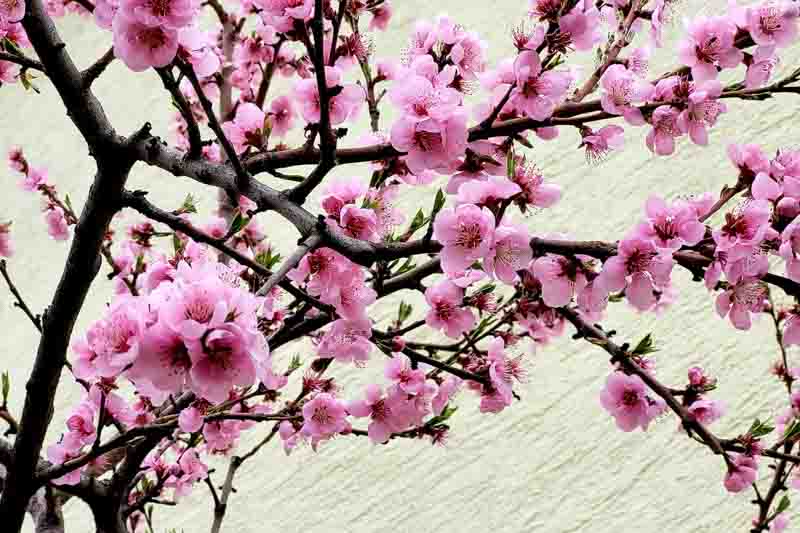
Fruits: Following the flowers, the tree produces small, yellow-green to yellow plums in summer that are both aromatic and sour, traditionally used in East Asian cuisine and medicine.
Foliage: The dark green leaves are simple, oval-shaped with a pointed tip, turning to shades of yellow and sometimes red in the fall.
Bark: The bark is smooth and gray, adding to the tree’s year-round interest.
Hardiness: Prunus mume is hardy in USDA zones 6-9, showcasing its adaptability to a range of temperate climates.
Uses: Primarily celebrated for its ornamental value in gardens, Prunus mume captivates with its graceful branching structure, adding architectural interest. Gardeners prize it as an excellent specimen tree and often include it in mixed borders. Beyond its ornamental appeal, people in Japan use its fruits to make umeboshi (pickled plums) and plum wine. The tree is ideal for a small garden and is also a popular subject in bonsai.
Wildlife: Prunus mume’s vibrant early blooms attract pollinators like bees, crucial for winter and early spring foraging. This is a larval host plant for the Eastern Tiger Swallowtail (Papilio glaucus), and its fruit provides food for birds, enhancing garden biodiversity. A valuable addition to wildlife gardens, it supports ecosystems when few other food sources are available.
Toxicity: As with many stone fruits, the seeds of Prunus mume contain compounds that can be toxic to cats, dogs and horses if ingested in large quantities.
Invasiveness: Prunus mume is not invasive in the regions where it is commonly grown.
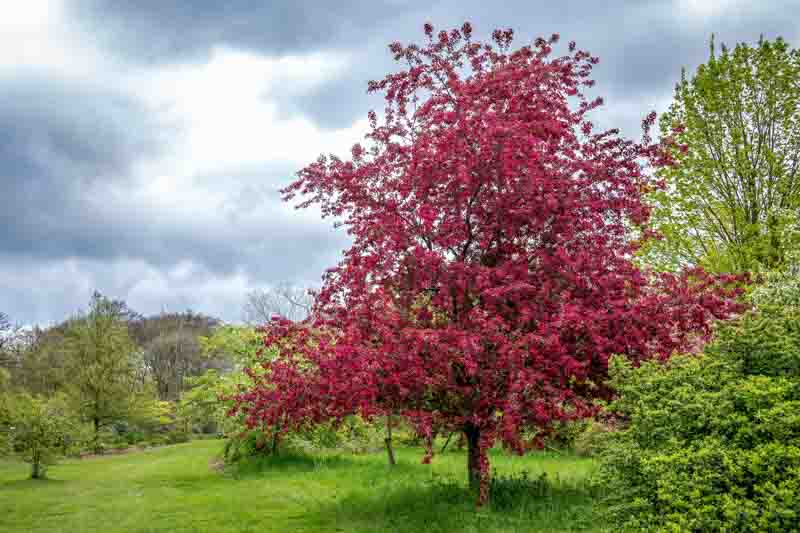
Climate Consideration: Prunus mume is best suited to USDA Hardiness Zones 6 through 9. In these zones, the tree can withstand the winter cold while also enjoying a long enough growing season to flower and fruit successfully. Choose a planting site that is somewhat sheltered from strong winds to protect the delicate blossoms and developing fruits.
Sunlight: Choose a location that receives full sun to partial shade, with at least 6 hours of direct sunlight daily for optimal flowering and fruiting.
Soil: Prunus mume prefers well-drained, fertile soil with a neutral to slightly acidic pH. Amend heavy clay or sandy soils with compost to improve fertility and drainage. This flowering tree is intolerant to poor or dry soils.
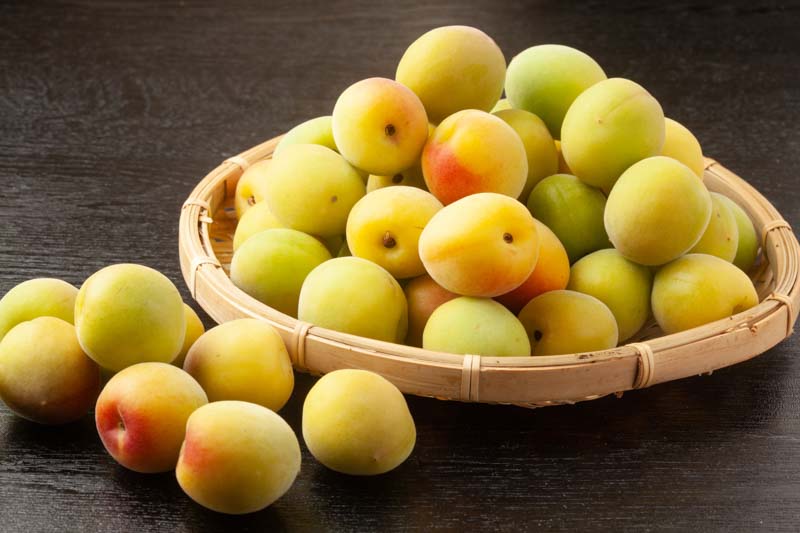
Prunus mume has a rich history of culinary uses across East Asia, particularly in China, Japan, and Korea. Its fruit is celebrated for its unique flavor profile, ranging from tart to slightly sweet.
Umeboshi (Japanese Pickled Plums): Umeboshi are salt-pickled, sun-dried ume fruits, often tinged with red shiso (perilla) leaves, which give them a distinctive red color. These pickled plums are a staple in Japanese cuisine, known for their sour and salty taste. They are commonly served as a side dish with rice, included in bento boxes, or used as a filling for onigiri (rice balls).
Umeshu (Plum Wine): Umeshu is a sweet and fragrant liqueur made by steeping unripe ume fruits in alcohol (typically shochu) and sugar. It can be enjoyed on its own, on the rocks, mixed with soda, or as part of cocktails. Umeshu is appreciated for its refreshing taste and aromatic qualities.
Ume Syrup: Ume syrup is made from the juice of ume fruits and sugar, often enhanced with honey or other sweeteners. It’s used as a flavoring for drinks, desserts, and as a natural remedy for coughs and sore throats.
Ume Jam: Similar to other fruit jams, ume jam is made by cooking down ume fruits with sugar. It’s used as a spread for bread, a topping for yogurt, and as an ingredient in various sweets.
Umeboshi Paste: This versatile paste is made from ground umeboshi. It serves as a seasoning for cooking, adding a unique acidity and saltiness to dressings, sauces, and spreads.
Korean Maesil-cha (Plum Tea): In Korea, maesil-cha is a popular traditional tea made from fermented ume fruits. It’s believed to aid digestion and boost energy levels.
Chinese Suān Méi Tāng (Sour Plum Drink): This refreshing summer drink is made from smoked ume fruits, sweetened and served chilled. It’s known for its cooling effect and is believed to help with heat relief.
Prunus mume’s culinary versatility extends beyond these traditional uses, as chefs and home cooks continue to explore new ways to incorporate this unique fruit into modern dishes. Its distinct flavor can add depth and complexity to both sweet and savory recipes, making it a valuable ingredient in the kitchen.
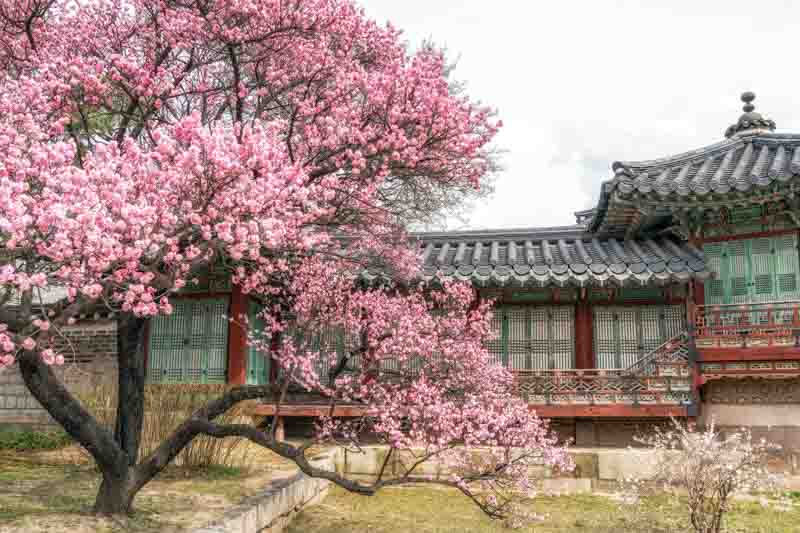
Propagating a Plum blossom tree can be a rewarding gardening project. This beautiful flowering tree can be propagated through several methods, including seed, cuttings, and grafting. Each method has its own set of steps and considerations.
Prunus mume is generally resistant to most insects and diseases. Potential insect pests of the Plum blossom tree include:
Aphids: These small, sap-sucking insects can cause leaf curling and distortion. They excrete honeydew, leading to sooty mold. Control includes washing them off with a strong jet of water or using insecticidal soap.
Borers: Larvae that tunnel into the branches or trunk, weakening the tree. Keep trees healthy to prevent infestations. Infected limbs should be pruned and destroyed.
Scale Insects: These pests attach to branches and stems, sucking sap and weakening the tree. They can be controlled with horticultural oil or insecticidal soap.
Caterpillars: Larvae feeding on foliage, leading to significant leaf loss, and potentially defoliating and weakening plants.
Tent Caterpillars: Social caterpillars construct silk tents in trees, heavily feeding on leaves and causing defoliation.
Mites: Various mite species can infest leaves, leading to discoloration and leaf drop. Miticides and natural predators can help control mite numbers.
Brown Rot: This fungal disease affects the fruit, causing rot and reducing yield. Fungicide treatments and removing infected material can limit its spread.
Bacterial Canker: This disease causes dark, sunken lesions on bark, oozing sap, and dieback of branches in Prunus mume. Control involves pruning infected limbs during dry weather and applying copper-based fungicides.
Honey Fungus: A deadly root rot fungus that attacks and kills tree roots, leading to wilting, yellowing leaves, and eventual tree death. Removal of affected trees and soil sterilization are recommended management practices.
Silver Leaf: Characterized by a silvery sheen on leaves, leading to branch dieback and reduced fruit yield. Infected branches should be pruned back to healthy wood in dry conditions to prevent the spread of spores.
Frost Damage: Late frosts can damage blossoms and young shoots, reducing fruit production. Plant in a sheltered location or use frost protection methods.
Root rot: Overwatering or poor drainage can lead to root rot. Ensure that soil is well-draining and avoid overwatering.
Nutrient Deficiency: Yellowing leaves or poor growth may indicate a lack of nutrients. Apply a balanced fertilizer according to soil test recommendations.
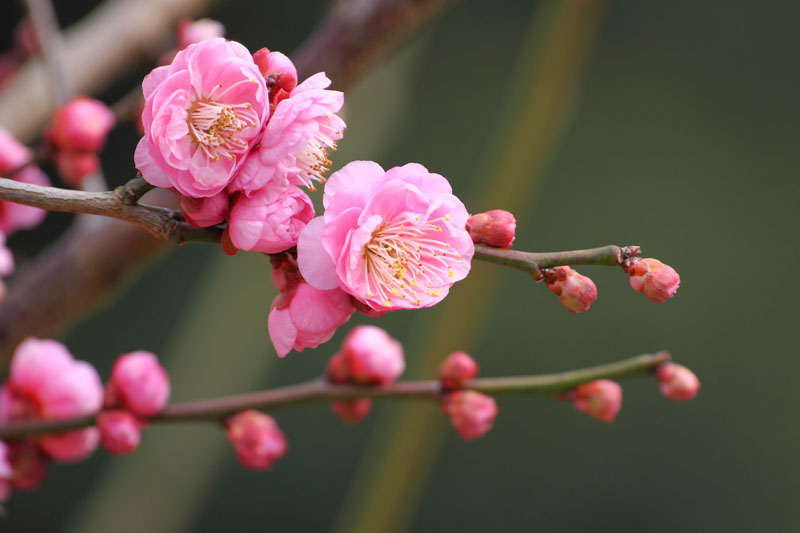
| Hardiness |
6 - 9 |
|---|---|
| Heat Zones |
6 - 8 |
| Climate Zones | 3, 3A, 3B, 7, 8, 9, 12, 13, 14, 15, 16, 19, 20, 21, 22 |
| Plant Type | Fruits, Trees |
| Plant Family | Rosaceae |
| Genus | Prunus - Flowering Cherry Tree, Prunus - Fruit Tree |
| Exposure | Full Sun, Partial Sun |
| Season of Interest |
Spring (Early) Winter |
| Height |
15' - 20' (4.6m - 6.1m) |
| Spread |
15' - 20' (4.6m - 6.1m) |
| Spacing |
180" - 240" (4.6m - 6.1m) |
| Maintenance | Low |
| Water Needs | Average |
| Soil Type | Chalk, Clay, Loam, Sand |
| Soil pH | Acid, Alkaline, Neutral |
| Soil Drainage | Moist but Well-Drained, Well-Drained |
| Characteristics | Fragrant, Showy, Fruit & Berries |
| Attracts | Bees, Birds |
| Garden Uses | Beds And Borders, Small Gardens |
| Garden Styles | Prairie and Meadow, Informal and Cottage, City and Courtyard |
| Hardiness |
6 - 9 |
|---|---|
| Heat Zones |
6 - 8 |
| Climate Zones | 3, 3A, 3B, 7, 8, 9, 12, 13, 14, 15, 16, 19, 20, 21, 22 |
| Plant Type | Fruits, Trees |
| Plant Family | Rosaceae |
| Genus | Prunus - Flowering Cherry Tree, Prunus - Fruit Tree |
| Exposure | Full Sun, Partial Sun |
| Season of Interest |
Spring (Early) Winter |
| Height |
15' - 20' (4.6m - 6.1m) |
| Spread |
15' - 20' (4.6m - 6.1m) |
| Spacing |
180" - 240" (4.6m - 6.1m) |
| Maintenance | Low |
| Water Needs | Average |
| Soil Type | Chalk, Clay, Loam, Sand |
| Soil pH | Acid, Alkaline, Neutral |
| Soil Drainage | Moist but Well-Drained, Well-Drained |
| Characteristics | Fragrant, Showy, Fruit & Berries |
| Attracts | Bees, Birds |
| Garden Uses | Beds And Borders, Small Gardens |
| Garden Styles | Prairie and Meadow, Informal and Cottage, City and Courtyard |
How many Prunus mume (Plum Blossom) do I need for my garden?
| Plant | Quantity | |
|---|---|---|
| Prunus mume (Plum Blossom) | N/A | Buy Plants |
Create a membership account to save your garden designs and to view them on any device.
Becoming a contributing member of Gardenia is easy and can be done in just a few minutes. If you provide us with your name, email address and the payment of a modest $25 annual membership fee, you will become a full member, enabling you to design and save up to 25 of your garden design ideas.
Join now and start creating your dream garden!
Create a membership account to save your garden designs and to view them on any device.
Becoming a contributing member of Gardenia is easy and can be done in just a few minutes. If you provide us with your name, email address and the payment of a modest $25 annual membership fee, you will become a full member, enabling you to design and save up to 25 of your garden design ideas.
Join now and start creating your dream garden!